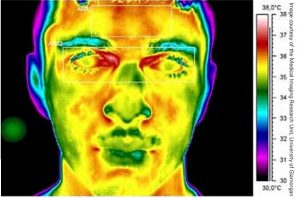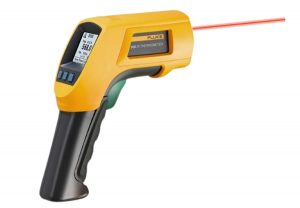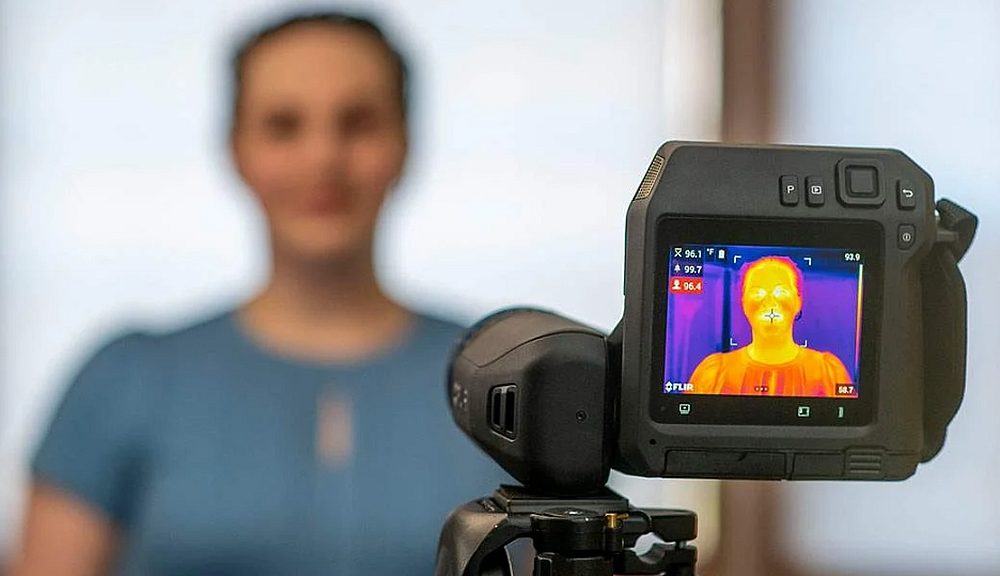- With the social distancing measures recommended to avoid the transmission of the new coronavirus (COVID-19), thermal cameras and infrared thermometers are of great interest, since these two manual instruments allow the remote and non-contact monitoring of an individual’s temperature rise and thus the detection of fever.
- A thermal camera (or infrared camera) and an infrared thermometer measure remotely and without contact a temperature on the surface of an object or living being.
- They capture the infrared radiation emitted (invisible to the human eye) by an object or an individual in order to determine its surface temperature.
The thermal camera exploits the infrared thermography technique to provide a thermal image called thermogram of a scene, object or individual through the acquisition and analysis of infrared radiation. The infrared camera, which actually works more like a camera than a video camera, exploits infrared light waves that are not visible to the naked eye. It captures via its infrared sensor (with variable resolution depending on the model) infrared radiation (heat waves) emitted by a body or object. The intensity of this radiation varies according to its temperature. This makes it possible to determine the temperature at different points of the body or object at a distance of 1 to 3 meters.

After an instantaneous treatment, the infrared camera displays on its screen an image whose color coding makes it possible to appreciate the surface temperature of the source. Each color corresponds to a level of intensity of the infrared radiation received, and therefore to a temperature range, which facilitates the direct reading of the temperature on each area of the image.
An infrared thermometer uses the same principle as an infrared camera but will provide the temperature of the precise point, and not of a surface like the thermal camera, on which a laser (red in general) necessary for the sighting points since infrared radiation is invisible to the naked eye. The measurement of an individual’s temperature must be made at a distance of 5 to 20 cm.

Each infrared thermometer has a distance to measurement point ratio (D:S) which provides the diameter of the measured surface in relation to the distance to the target. For example, if the D:S ratio is 12:1, the thermometer measures a point approximately 2.5 centimeters in diameter when it is 30 cm from the target. Therefore, this thermometer is not suitable for example to measure an area of 5 cm at a distance of 1 m because the thermometer will also measure the temperature outside the target area. Depending on the infrared thermometer, the distance to the measuring point ratios vary from about 1:1 for entry-level devices to about 60:1 for high-end models.

Unlike visible light, infrared rays do not pass through glass. Therefore, it is not possible to measure through glass with conventional infrared measurement technology. The glass used in the building is transparent to visible and near-infrared radiation but opaque to the far infrared. It therefore prevents the transmission of thermal radiation.
In order to obtain the temperature as close as possible to the actual value with infrared measurement techniques, however, the emissivity of the instrument should be adjusted (when the instrument allows it) to that of the material or surface whose temperature is to be measured. The emissivity is a unitless parameter between 0 and 1. 1 is the emissivity of a perfect black body. Human skin has an emissivity ranging from 0.97 to 23°C to 0.98 to 33°C. It thus presents an emissivity very close to the emissivity of a black body.







